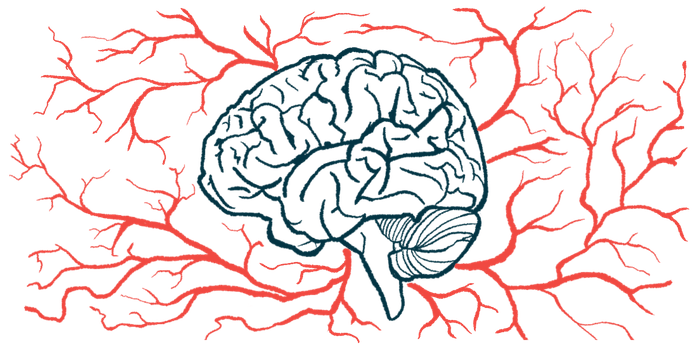BIPSS can reliably diagnose Cushing’s after inconclusive tests
Method better than MRI at differentiating Cushing’s disease from ectopic form

A recent study supports the reliability of a diagnostic tool to distinguish adrenocorticotropic hormone (ACTH)-dependent forms of Cushing’s syndrome in people who have inconclusive imaging or biochemical test results.
The procedure, called bilateral inferior petrosal sinus sampling (BIPSS), is able to accurately differentiate patients with Cushing’s disease from those with the ectopic form.
That’s according to a study, titled “Bilateral inferior petrosal sinus sampling: validity, diagnostic accuracy in lateralization of pituitary microadenoma, and treatment in eleven patients with Cushing’s syndrome – a single-center retrospective cohort study,” recently published in the journal BMC Endocrine Disorders.
Blood samples from veins draining pituitary gland used to measure ACTH levels
In BIPSS, blood samples from the veins draining the brain’s pituitary gland are collected and used to measure ACTH levels. This can be used to confirm the presence of a pituitary tumor, which is typically signaled by increased ACTH levels.
“BIPSS can be a reliable and low-complication method in evaluating patients with ACTH-dependent [Cushing’s syndrome] who had equivocal results in imaging and biochemical tests,” the researchers wrote.
Cushing’s syndrome comprises a group of conditions marked by excessive cortisol levels. In certain forms of the condition, the abnormal increase in cortisol levels is brought on by high levels of ACTH, a hormone normally produced in the pituitary gland that promotes cortisol production.
In most of these cases, tumors (adenomas) in the pituitary gland are the source of excessive ACTH, and this form of the syndrome is called Cushing’s disease. Less frequently, tumors found outside the pituitary gland act as the source of excess ACTH, and this type is known as ectopic Cushing’s syndrome.
To distinguish Cushing’s disease from ectopic Cushing’s, non-invasive tests such as MRI can be used. However, “only relatively large lesions … detected on MRI reliably confirm the diagnosis of [Cushing’s disease] with biochemical confirmation and expected clinical symptoms,” the researchers wrote.
BIPSS reportedly offers high diagnostic sensitivity and specificity, with few complications when performed by experienced radiologists. Sensitivity refers to a test’s ability to correctly identify individuals with a specific condition, while specificity refers to its ability to correctly rule out those without it.
In this study, researchers in Iran assessed the validity of BIPSS in distinguishing patients with Cushing’s disease from those with the ectopic form.
Study included 11 patients with inconclusive biochemical, imaging test results
The study included 11 patients who had inconclusive biochemical and imaging test results and who underwent BIPSS at a tertiary care hospital between 2018 and 2020.
Patients were a median 32 years old, and included eight women (72.7%) and three men (27.3%). About 90% of the patients had at least one skin symptom of Cushing’s, including stretch marks, acne, easy bruising, and excessive hair growth.
Other symptoms included high blood pressure (81%), reproductive dysfunction (81%), weight gain (72%), muscle weakness (45%), and headache (27%).
Eight patients had high cortisol levels in their blood, while three had normal levels. All had elevated urine cortisol levels. Six patients also had elevated blood levels of ACTH.
For BIPSS, blood samples were obtained from the patients’ peripheral blood, and the left and right inferior petrosal sinus draining the pituitary gland. The researchers then calculated the ratio between ACTH levels measured in the inferior petrosal sinus and in peripheral blood ACTH.
BIPSS testing was performed with desmopressin (DDAVP) stimulation. DDAVP is an artificial form of a hormone that stimulates the release of ACTH.
The baseline ratio value, before DDAVP stimulation, indicated seven patients had Cushing’s disease (with a ratio equal to 2 or above). In four of those cases, the test indicated the source of excess ACTH was unilateral (from one side of the pituitary gland).
After DDAVP injection, Cushing’s disease was confirmed in eight patients, who had a ratio equal to 3 or higher. A unilateral source of excess ACTH was confirmed in four patients.
In patients with ectopic Cushing’s syndrome, no changes in ACTH levels occurred before or after DDAVP stimulation.
MRI scans revealed the presence of a pituitary adenoma in five patients, an enlarged pituitary in one patient, a pituitary mass and lesion in two patients, and a potential pituitary adenoma and adrenal mass in one patient. The pituitary gland was not visible in two patients.
High accuracy found in BIPSS testing
BIPSS testing performed before DDAVP stimulation had a diagnostic sensitivity of 87.5%, a specificity of 100%, and an accuracy of 91%. When performed after DDAVP stimulation, BIPSS had a diagnostic sensitivity, specificity, and accuracy of 100%.
However, pituitary MRI had a lower diagnostic accuracy, with a sensitivity of 62.5%, a specificity of 33%, and an accuracy of 54%.
In three Cushing’s disease patients, the final diagnosis based on surgery was consistent with MRI and BIPSS results and tumor localization on the same side. In one patient, surgery results were similar to MRI findings and showed a bilateral adenoma, while BIPSS had revealed an adenoma only on the left side of the pituitary gland.
In three other patients, surgery results were consistent with BIPSS data and lateralized adenoma to the same side, although MRI provided discordant results.
Overall, BIPSS accurately detected pituitary adenoma lateralization in six patients with Cushing’s disease, while MRI detected only tumor lateralization correctly in two patients.
“BIPSS had higher validity than MRI in differentiating [Cushing’s disease] from [ectopic Cushing’s], both with and without stimulation,” the researchers wrote.
The small sample size and retrospective nature of the study were pointed out by researchers as major limitations.
“Further studies could investigate the BIPSS in a larger sample size and determine the validity of this method in patients with [Cushing’s syndrome],” they wrote.









